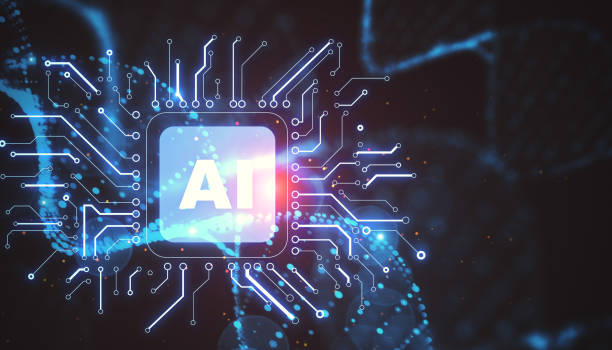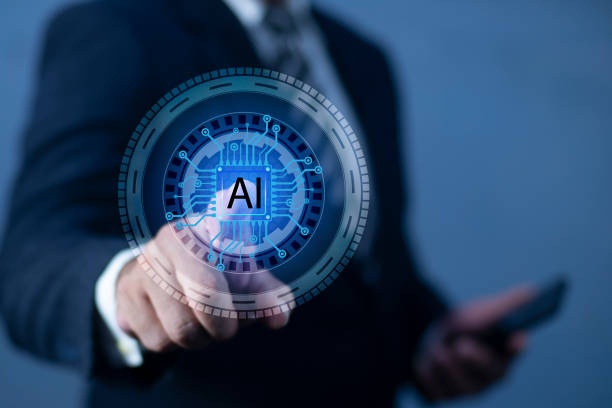What is Artificial Intelligence? Basic Definitions and Concepts
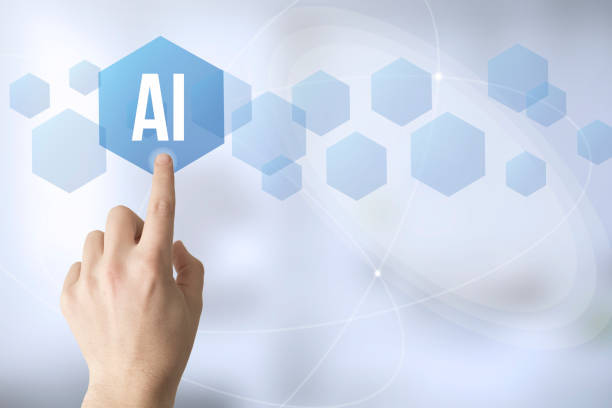
Artificial Intelligence (AI) is a branch of computer science dedicated to building intelligent machines, especially intelligent computer programs.
Simply put, the goal of artificial intelligence is to simulate human intelligence in machines so that they can perform tasks that typically require human intelligence.
These tasks include #learning, #problem_solving, #pattern_recognition, #natural_language_understanding, and #decision_making.
There are many definitions of artificial intelligence, but most emphasize a system’s ability to reason, learn, and act independently.
For example, some definitions define artificial intelligence as the ability of a system to mimic intelligent human behavior, while others focus on the ability of a system to solve complex problems or achieve specific goals.
Understanding the basic concepts of artificial intelligence is essential for understanding its applications and potential.
These concepts include machine learning algorithms, neural networks, natural language processing, and computer vision.
Each of these areas plays an important role in the development and advancement of artificial intelligence and is used in a wide range of industries and applications.
Are you tired of missing business opportunities due to not having a professional corporate website?
Rasaweb helps you create a professional corporate website to:
✅ Build a powerful and reliable image of your brand
✅ Turn website visitors into loyal customers
⚡ Get a free consultation right now!
The History of Artificial Intelligence from Beginning to Today
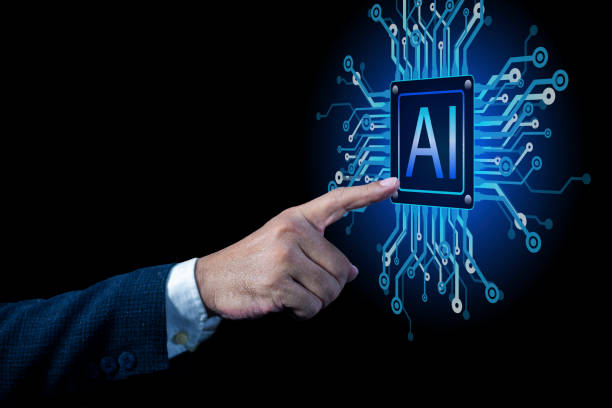
The history of artificial intelligence dates back to the 1950s, when scientists and researchers first became interested in the possibility of building machines that could think and learn.
One of the early milestones was the creation of the “chess player” program by Arthur Samuel in 1956, which showed that computers could play complex games.
In the 1960s and 1970s, artificial intelligence experienced a wave of hope and investment, but soon the limitations of the technology of the time became apparent.
This period is known as the “AI winter” because progress slowed and investment decreased.
In the 1980s and 1990s, with the advent of new machine learning algorithms and increased computing power, artificial intelligence rebounded.
The development of neural networks and deep learning algorithms paved the way for significant advances in areas such as computer vision and natural language processing.
Today, artificial intelligence has become one of the most important and popular research areas in computer science and is used in a wide range of industries and applications.
Types of Artificial Intelligence: Approaches and Classifications
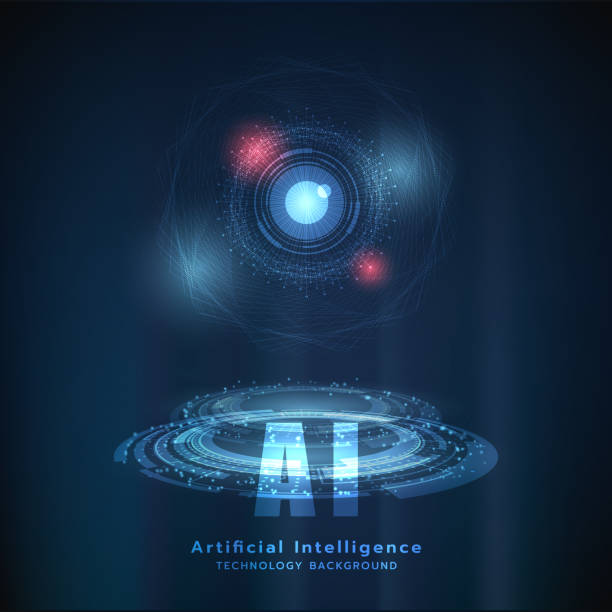
Artificial intelligence can be classified based on various criteria.
One of the most common methods is classification based on the capabilities and performance of intelligent systems.
Accordingly, artificial intelligence is divided into two main categories:
- Weak Artificial Intelligence (Narrow AI): This type of artificial intelligence is designed to perform specific and limited tasks.
Most of the artificial intelligence systems in use today are of the weak artificial intelligence type.
Examples of weak artificial intelligence include facial recognition systems, voice assistants, and product recommendation systems. - Strong Artificial Intelligence (General AI): This type of artificial intelligence has cognitive abilities similar to humans and can perform any task that a human can do.
Strong artificial intelligence is still in the research stage and has not yet been fully developed.
In addition, artificial intelligence can be classified based on the different approaches used in its development.
Some common approaches include machine learning, neural networks, expert systems, and automated planning.
Each of these approaches has its own advantages and disadvantages and is suitable for solving different problems.
Here is a table to categorize the types of artificial intelligence:
| Type of Artificial Intelligence | Description | Examples |
|---|---|---|
| Weak Artificial Intelligence (Narrow AI) | Focused on performing specific tasks | Facial recognition systems, voice assistants |
| Strong Artificial Intelligence (General AI) | Ability to perform any task that a human can | Still in the research stages |
Machine Learning: The Beating Heart of Artificial Intelligence

Machine learning is a subset of artificial intelligence that allows systems to learn from data without explicit programming.
In fact, in machine learning, algorithms are trained using data to identify patterns and relationships in the data and make predictions or decisions based on them.
This process is similar to how humans learn, except that machines can process data much faster and more accurately.
Machine learning algorithms are generally divided into three categories:
- Supervised Learning: In this type of learning, the algorithm is trained using labeled data.
Labeled data includes inputs and expected outputs.
The goal of the algorithm is to learn a function that can predict the correct output for each input. - Unsupervised Learning: In this type of learning, the algorithm is trained using unlabeled data.
The goal of the algorithm is to find hidden patterns and structures in the data. - Reinforcement Learning: In this type of learning, the algorithm learns by interacting with its environment.
By performing various actions in the environment and receiving feedback (reward or penalty) from the environment, the algorithm tries to learn strategies that lead to the most reward.
Machine learning plays a very important role in the development of artificial intelligence and is used in a wide range of applications, including image recognition, natural language processing, market prediction, and autonomous driving.
Is your company’s website as professional and reliable as it should be? With specialized corporate website design by Rasaweb, create an online presence that represents your credibility and attracts more customers.
✅ Build a powerful and professional image of your brand
✅ Convert visitors into real customers
⚡ Get a free consultation now!
Applications of Artificial Intelligence in Today’s World
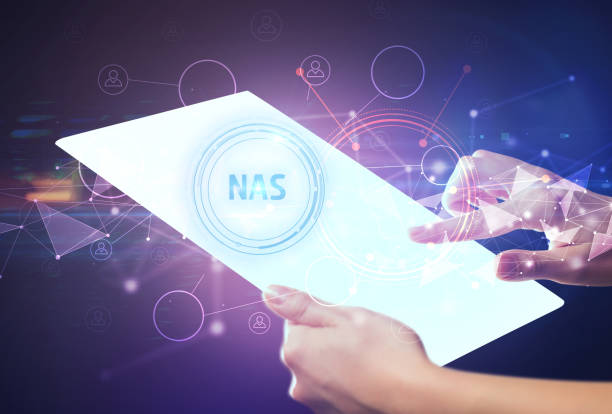
Artificial intelligence is currently used in a wide range of industries and applications and increasingly affects our lives.
Some of the most important applications of artificial intelligence include:
- Medicine: Artificial intelligence plays an important role in disease diagnosis, drug development, personalized treatment, and improved patient care.
- Finance: Artificial intelligence is used in fraud detection, risk management, market forecasting, and providing personalized financial services.
- Transportation: Artificial intelligence plays an important role in the development of self-driving cars, traffic optimization, and improved transportation safety.
- Manufacturing: Artificial intelligence is used in the automation of production processes, quality control, and optimization of the supply chain.
- Education: Artificial intelligence is used in personalizing education, providing instant feedback to students, and developing interactive educational content.
These are just a few examples of the many applications of artificial intelligence in today’s world.
As technology advances, artificial intelligence is expected to play a more important role in our lives and help solve complex problems and improve the quality of life.
Challenges and Limitations of Artificial Intelligence

Despite its vast potential, artificial intelligence also faces challenges and limitations.
One of the most important challenges is the need for large and high-quality data to train machine learning algorithms.
Machine learning algorithms need a large amount of data to learn patterns and relationships in the data.
If the data is insufficient or inappropriate, the algorithm cannot be trained properly and will not perform well.
Another challenge is the interpretability of artificial intelligence algorithms.
Many machine learning algorithms, especially deep neural networks, operate as black boxes.
This means that it is difficult to understand why an algorithm has reached a particular result.
This can be problematic in some applications, such as medicine and law, as it is necessary to be able to explain the reasoning behind AI decisions.
In addition, ethical issues related to artificial intelligence are also of great importance.
The use of artificial intelligence can lead to discrimination, inequality, and privacy violations.
Therefore, it is necessary to pay special attention to ethical issues in the development and use of artificial intelligence.
What Should We Expect from the Future of Artificial Intelligence?
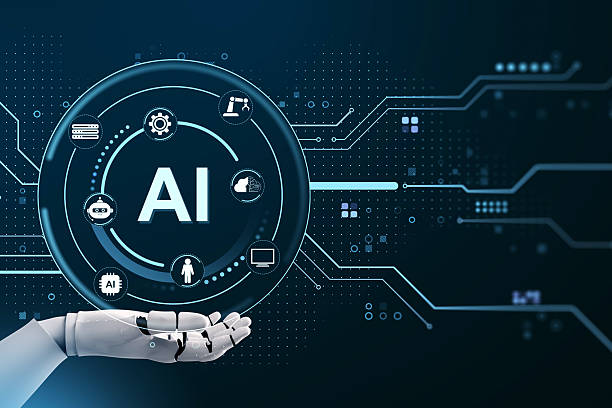
The future of artificial intelligence is very exciting and full of potential.
As technology advances, artificial intelligence is expected to be used in a wider range of industries and applications and increasingly affect our lives.
Some predictions about the future of artificial intelligence include:
- Strong Artificial Intelligence: It is expected that in the future, strong artificial intelligence will be developed and machines will be able to perform tasks that typically require human intelligence.
- Widespread Automation: Artificial intelligence can automate many repetitive and tedious tasks, allowing humans to focus on more creative and important tasks.
- Personalization: Artificial intelligence can completely personalize the user experience and offer services and products based on individual needs and preferences.
- Improved Health: Artificial intelligence can help diagnose diseases, develop drugs, and improve patient care, increasing lifespan and quality of life.
Here is a table showing the areas where artificial intelligence is expected to have the greatest impact in the future:
| Area | Possible Impacts |
|---|---|
| Healthcare | More accurate disease diagnosis, personalized treatments |
| Transportation | Self-driving cars, reduced accidents |
| Education | Personalized education, easier access to educational resources |
| Manufacturing | Increased productivity, reduced costs |
Artificial Intelligence and Cybersecurity
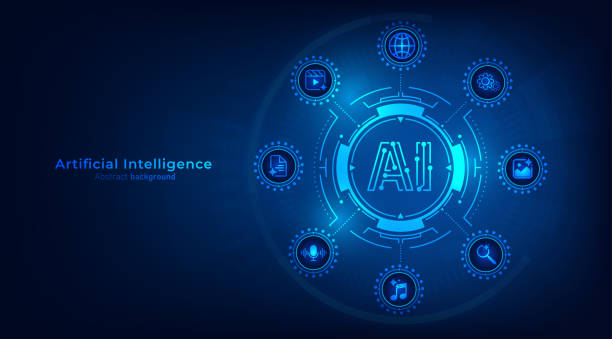
Artificial intelligence plays an increasing role in cybersecurity.
On the one hand, artificial intelligence can be used to identify and prevent cyber attacks.
Artificial intelligence systems can identify suspicious patterns in network traffic and user behavior and automatically respond to them.
On the other hand, hackers can also use artificial intelligence to develop more complex and effective attacks.
Artificial intelligence can be used to create more advanced malware, targeted phishing, and social engineering attacks.
Therefore, cybersecurity professionals need to constantly update their skills and use the latest artificial intelligence techniques to defend against cyber attacks.
The use of artificial intelligence in cybersecurity requires a comprehensive and balanced approach.
We must simultaneously use artificial intelligence to strengthen cyber defense and counter threats from the use of artificial intelligence in cyber attacks.
Does your company’s website create a professional and lasting first impression on potential customers? Rasaweb, with professional corporate website design, not only represents the credibility of your brand, but also opens a path for the growth of your business.
✅ Create a powerful and reliable brand image
✅ Attract target customers and increase sales
⚡ Get a free consultation
The Impact of Artificial Intelligence on the Labor Market
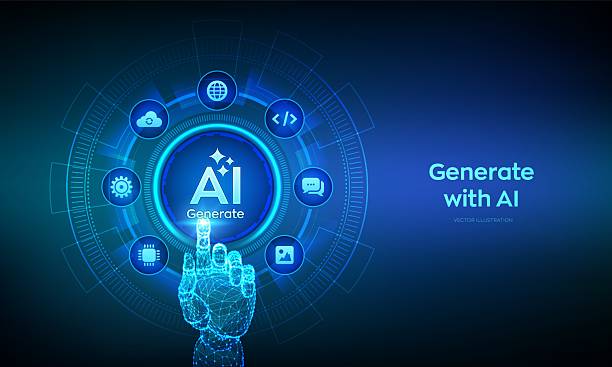
The impact of artificial intelligence on the labor market is a complex and controversial issue.
On the one hand, artificial intelligence can automate many jobs and lead to job losses.
On the other hand, artificial intelligence can create new jobs and increase productivity and efficiency.
It is expected that jobs involving repetitive and routine tasks will be most affected by artificial intelligence.
These jobs include office workers, telephone operators, and production line workers.
On the other hand, jobs that require creative skills, problem-solving, and human interaction are less at risk of automation.
These jobs include engineers, scientists, artists, and healthcare professionals.
To adapt to changes caused by artificial intelligence in the labor market, people need to learn new skills and prepare for new jobs.
Education plays an important role in this regard and should help people acquire the skills needed to succeed in the future labor market.
Artificial Intelligence Learning Resources: How to Get Started?
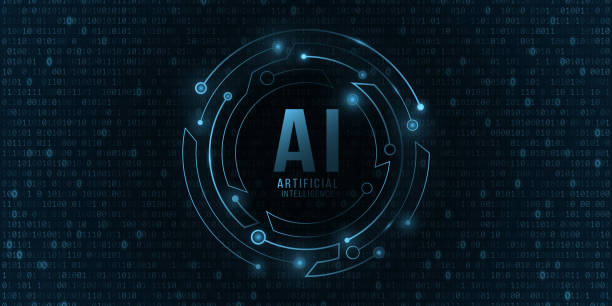
If you are interested in learning artificial intelligence, there are many resources to get started.
Some common resources include:
- Online Courses: Online education platforms such as Coursera, edX, and Udacity offer numerous courses in the field of artificial intelligence and machine learning.
- Books: There are many books on artificial intelligence and machine learning that can help you understand basic and advanced concepts.
- Scientific Articles: Scientific articles published in reputable conferences and journals provide up-to-date and comprehensive information on the latest advances in artificial intelligence.
- Practical Projects: Doing practical projects is one of the best ways to learn artificial intelligence.
You can use real data and machine learning algorithms to carry out projects in various fields.
To start learning artificial intelligence, you do not need to have a related degree.
With motivation and perseverance, you can acquire the necessary knowledge and skills using available resources.
The best way to start is to choose a specific area of artificial intelligence that you are interested in and then start learning the basic concepts and doing practical projects in that area.
Over time, you can expand your knowledge and skills and also address other areas of artificial intelligence.
Frequently Asked Questions
| Question | Answer |
|---|---|
| 1. What is Artificial Intelligence (AI)? | It is a branch of computer science that aims to create machines capable of simulating human intelligence and performing tasks that require human thinking, such as learning, problem-solving, and decision-making. |
| 2. What are the main types of artificial intelligence? | It can be classified into Weak AI (Narrow AI) that focuses on a specific task, General AI that has comprehensive human capabilities, and Super AI that exceeds human intelligence. |
| 3. Mention some common applications of artificial intelligence in our daily lives. | These include voice assistants (such as Siri and Alexa), recommendation systems (such as Netflix and Amazon), self-driving cars, facial recognition systems, and spam filters. |
| 4. What is the difference between Artificial Intelligence and Machine Learning? | Artificial intelligence is the broader concept of creating intelligent machines, while machine learning is a subset of artificial intelligence that focuses on enabling systems to learn from data without explicit programming. |
| 5. What is Deep Learning? | It is a subset of machine learning that uses multi-layered artificial neural networks (deep neural networks) to process data and discover complex patterns, and is used in image and speech recognition. |
| 6. What are the most prominent benefits of artificial intelligence? | Improving efficiency and productivity, automating repetitive tasks, making better decisions based on the analysis of big data, and developing solutions to complex problems in fields such as medicine and science. |
| 7. What are the main challenges facing the development and deployment of artificial intelligence? | These include the need for huge amounts of high-quality data, privacy and security issues, bias in data and algorithms, and high development and maintenance costs. |
| 8. Does artificial intelligence raise ethical or social concerns? | Yes, it raises concerns related to privacy, algorithmic bias, job loss due to automation, and responsibility for errors made by intelligent systems, and the need for a regulatory framework. |
| 9. How can artificial intelligence affect the future of the labor market? | It can lead to the automation of some routine jobs, but it will also create new jobs that require advanced skills in developing, operating, and maintaining artificial intelligence systems. |
| 10. What are some of the modern or promising technologies in the field of artificial intelligence? | These include advanced Natural Language Processing (NLP) (such as large language models like ChatGPT), Computer Vision, Robotics, and Generative AI. |
And other services of Rasa Web Advertising Agency in the field of advertising
Smart Direct Marketing: An effective tool to attract customers with the help of Google Ads management.
Smart Sales Automation: Professional optimization for online growth using user experience customization.
Smart Marketing Automation: A combination of creativity and technology for digital branding by intelligent data analysis.
Smart Digital Advertising: Designed for businesses looking to grow online through attractive user interface design.
Smart Website Development: Professional optimization to increase site visits using user experience customization.
And more than a hundred other services in the field of internet advertising, advertising consulting and organizational solutions
Internet Advertising | Advertising Strategy | Advertorial Report
Resources
What is Artificial Intelligence? Its applications and types
,What is Artificial Intelligence? (AI) Everything you need to know about it
,What is Artificial Intelligence? From A to Z + Applications and the Future of Artificial Intelligence
,What is Artificial Intelligence? Definitions, Types, Applications, and Challenges Ahead
? In today’s competitive world, a powerful online presence is the key to success. Rasaweb Digital Marketing Agency takes your business to the top by providing comprehensive services including fast website design, SEO, and social media management. Contact us today for a free consultation and to learn more about our services. 021-91097325
📍 Tehran, Mirdamad Street, next to the Central Bank, South Kazerun Alley, Ramin Alley No. 6
“`

